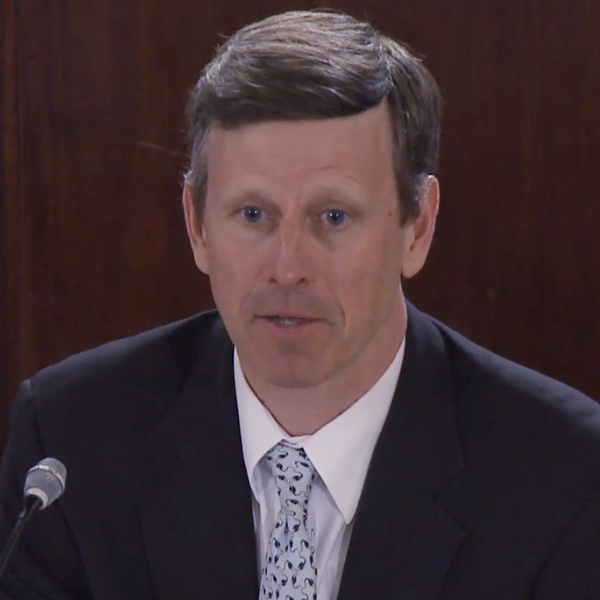PJM last week defended the proposed capacity auction parameters in its quadrennial review before FERC against two protests from the generation sector (ER22-2984).
The major changes proposed in the quadrennial review filing include shifting the reference resource from a combustion turbine to a combined cycle generator, updating the calculation of the gross cost of new entry (CONE), revising the adjustment of CONE in the years between reviews, steeping the variable resource requirement (VRR) demand curve, and shifting from a historical energy and ancillary service (EAS) offset calculation to a forward-looking approach.
The changes detailed in the Sept. 30 filing would be effective for the 2026/27 Base Residual Auction, scheduled for November 2023. The PJM proposal was endorsed by the Markets and Reliability Committee with limited support at its Aug. 24 meeting over stakeholder and Independent Market Monitor proposals. (See No Consensus on PJM Capacity Parameters.)
P3 Protests Transparency, VRR Curve and Forward-looking EAS
The PJM Power Providers Group (P3) argued that the proposed changes in PJM’s filings are not just and reasonable because of insufficient transparency in the data and models used to derive the market parameters. It also said the adoption of a steeper VRR curve will disincentivize construction of new generation needed for reliability.
In the shift to a future-looking EAS, PJM would rely on “paywalled” data from private exchanges and proprietary algorithms, which P3 argued obscures the mechanisms of the market, while historical prices are a “reasonable proxy for future prices” and are easily calculated and understood.
“As currently structured, this information will not be available, and therefore, it will be challenging, if not impossible, for stakeholders (whether supply or load) to fully understand how future revenues are being calculated. The ‘black box’ approach to such a critical component of future capacity market performance will inject needless uncertainty into decisions related to future investments in PJM,” P3 said.
It also argued that shifting the reference resource to a combined cycle generator will increase volatility in the capacity market by further exposing it to the fluctuations in fuel prices.
 Glen Thomas, P3 | © RTO Insider LLC
Glen Thomas, P3 | © RTO Insider LLCP3 President Glen Thomas said in an interview that together, the changes would increase capacity market volatility, curbing investment in generation.
“When you go to [combined cycle], you’re going to expose your reference technology to those vagaries, which is going to expose net CONE to significant shifts, which will lead to significant swings in capacity prices. Yes, our organization represents suppliers, but ultimately they’re going to be more motivated by stability and predictability; it’s tough to sell investors on boom-bust markets, which is exactly what this capacity market is heading towards,” he said.
Thomas noted that PJM President Manu Asthana made remarks at the Organization of PJM States Inc. Annual Meeting and the RTO’s own Annual Meeting that laid out reliability concerns over the next decade should the introduction of renewables lag behind growing load. Thomas said those concerns clash with the RTO’s proposed changes in the capacity market.
J-Power Critiques Amortization Period
The central argument of the second protest, from J-Power USA, is that PJM’s calculation of the gross CONE could create a scenario where the combined cycle reference unit cannot be constructed in some regions without having a lifespan shorter than the 20-year amortization period because of climate legislation. It referenced the Illinois Climate and Equitable Jobs Act (CEJA), which requires that all generating units reduce carbon emissions to zero by 2045.
J-Power posits that PJM should create adjusted CONE values for the Commonwealth Edison locational deliverability area (LDA) that reflect the possibility for shortened unit lifespans in that region.
“Reliability requires the CONE values for any modeled LDA to reflect the realities faced by developers of the new resources or owners of existing resources,” J-Power wrote. It added that PJM therefore “has an obligation to reflect the reduced asset life due to CEJA in ComEd when applying the CONE values to modeled LDAs.”
PJM Defends Proposed Changes
PJM argued that the forward-looking EAS offset and the methodologies used in both its derivation and the calculation of CONE are commonplace in the practices of market participants and have precedent in past FERC orders.
Shifting to a forward-looking offset can better “reflect the expected range of possible supply, demand and export conditions prevailing in future delivery periods,” PJM said, while a historical lookback can create “disequilibrium” under certain circumstances. The response gives the example of a lookback at a period of scarce supply, which would create a high EAS offset, reducing net CONE and scaling down the VRR curve, ultimately leading to less capacity being purchased when more is needed.
Because the market data and algorithms PJM is seeking to use under the proposal can be purchased for use by anyone, and they are already in widespread use, the RTO argued they are sufficiently transparent.
PJM also defended the proposed shift to a combined cycle reference unit by noting that no combustion turbines are currently under construction and none have been built since 2018.
“The proposal to move to a CC reference resource is consistent with current generation development trends, offers flexibility in operational parameters and produces net CONE reflecting the most economic technology. These results depart significantly from the findings underlying the 2018 quadrennial review,” PJM said.
In regard to J-Power’s concern about a 20-year asset life, PJM argued that it would be inappropriate to make “one-off” adjustments to an LDA through the quadrennial review.



